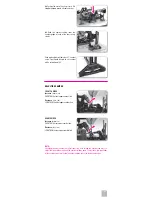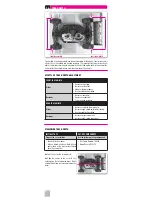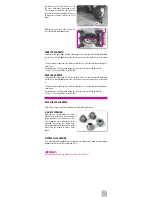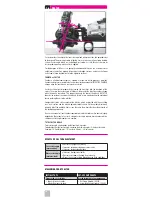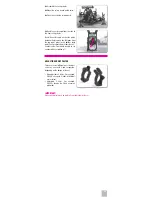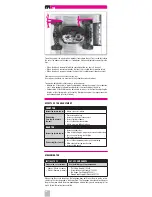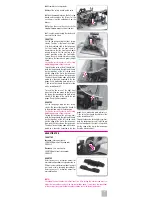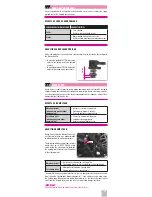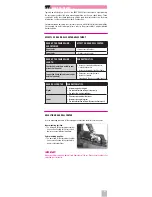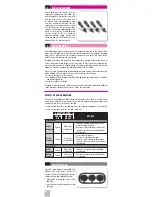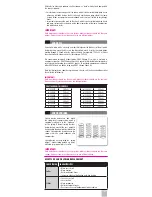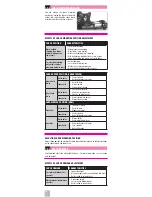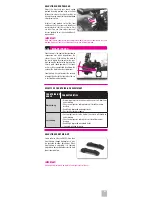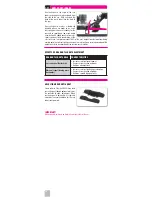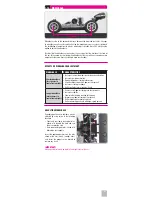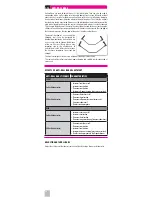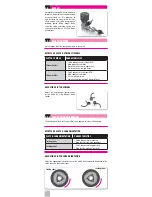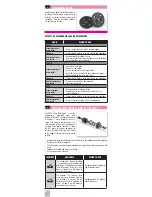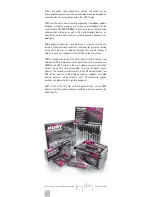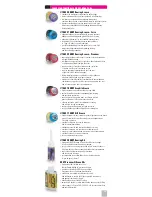
29
ADJUSTING SHOCK PRELOAD
Adjust the front and rear shock spring
preload by using preload clips of various
thicknesses above the shock springs, or
by adjusting the height of threaded preload
adjustment collars.
Initial set front preload so that the front
and drive shafts are level, and initially set
rear preload so that the rear lower arms
are level. You can then adjust front and/
or rear preload to suit track conditions &
requirements.
IMPORTANT!
Both front shocks should have the same preload; both rear shocks should have the same
preload. However, front & rear shock pairs may use different preload.
KICK-UP (FRONT)
1.10
Front kick-up is the angle of the front lower
suspension arm when viewed from the
side of the car. With kick-up the front of
the arm is higher than the rear of the arm.
Kick-up may be built into the design of the
chassis plate (bend upwards at the front)
or it may be accomplished by altering the
angle of the front lower inner pivot pins.
Front kick-up is used to adjust the amount
of weight transfer to the front when the car
is off-throttle or under braking.
EFFECTS OF FRONT KICK-UP ADJUSTMENT
FRONT KICK-UP
ANGLE
CHARACTERISTICS
More kick-up
• More weight transfer to the front of the chassis off-throttle or
under braking
• Chassis compresses or drops more off-throttle or under
braking
• Handling is improved on bumpy tracks
• Decreased steering response
Less kick-up
• Less weight transfer to the front of the chassis off-throttle or
under braking
• Chassis compresses or drops less off-throttle or under
braking
• Handling is improved on smooth tracks
• Increased steering response
ADJUSTING FRONT KICK-UP
Some vehicles (like the XB808) have fi xed
front kick-up, though optional parts may
be available to allow adjustment. When
front kick-up is adjustable, it is typically
adjusted via adjustable holders for the front
lower inner pivot pin.
IMPORTANT!
Make equal adjustments on both left and right sides of the car.

